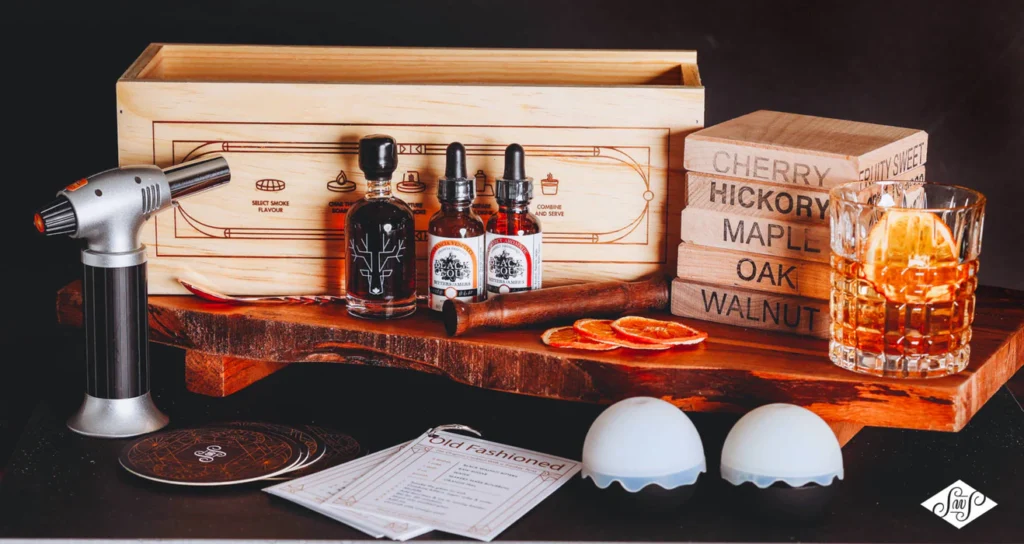Table of Contents
Old fashioned kit In today’s fast-paced, technology-driven world, there’s a growing desire to reconnect with simpler times. One popular way to embrace this nostalgia is through the use of old-fashioned kits. These kits provide an authentic and hands-on experience of traditional crafts, hobbies, and practices, offering both a trip down memory lane and a break from the digital age.
The Allure of Old-Fashioned Kits
Why Are Old-Fashioned Kits Making a Comeback?
Old-fashioned kits appeal to individuals looking for a sense of fulfillment and creativity. They combine the charm of vintage aesthetics with the joy of manual craftsmanship, offering:
- A Break from Technology: Many people seek to escape the constant barrage of notifications and screens. Engaging with old-fashioned kits provides a tactile and immersive experience that’s refreshingly low-tech.
- Personal Growth: These kits often teach traditional skills, from sewing to woodworking, which can be both challenging and rewarding.
- Connection to History: Working with these kits provides insight into the lives of previous generations, fostering a deeper appreciation for their ingenuity and resourcefulness.
Popular Types of Old-Fashioned Kits
Old-fashioned kits cater to various interests and hobbies, including:
- Crafting and Needlework
- Knitting kits
- Embroidery sets
- Quilting patterns
- Cooking and Baking
- Bread-making kits
- Traditional candy-making kits
- Home-brewing supplies
- Woodworking and DIY
- Birdhouse kits
- Furniture restoration sets
- Leather crafting tools
- Gardening and Nature
- Heirloom seed kits
- Beekeeping starter sets
- Traditional herbal remedies
Understanding the Components of Old-Fashioned Kits
What’s Inside an Old-Fashioned Kit?
Old-fashioned kits are thoughtfully designed to replicate traditional methods and tools. Typically, these kits include:
Basic Materials
Most kits come with everything needed to start a project, such as fabric, wood, or seeds. The materials are often sourced to mimic the authenticity of earlier times.
Tools and Accessories
Some kits provide vintage-style tools, such as hand-cranked drills or wooden knitting needles, enhancing the nostalgic feel.
Instruction Manuals
Detailed, illustrated guides often accompany these kits. Unlike digital tutorials, these manuals are often reminiscent of early instructional booklets, adding to the charm.

Exploring the Benefits of Old-Fashioned Kits
1. Rediscovering Forgotten Skills
Using these kits often involves mastering skills that have faded in modern times. Whether it’s hand-sewing a quilt or brewing beer from scratch, old-fashioned kits encourage:
- Patience
- Precision
- Perseverance
Example: Bread-Making Kits
A bread-making kit may include yeast, flour, and a recipe card printed in a vintage typeface. It teaches users how to knead dough, proof yeast, and bake bread in a way that predates modern bread machines.
2. Building Connections Through Shared Activities
Old-fashioned kits also serve as a means to bring people together. Families and friends can bond over shared projects like building a birdhouse or starting a garden.
Family-Oriented Kits
- A candle-making kit can involve children in melting wax and choosing scents.
- A soap-making kit offers an opportunity for families to create personalized gifts.
3. Fostering Sustainability and Self-Reliance
In an age of mass production, old-fashioned kits promote sustainability by encouraging handmade and reusable items.
Sustainable Practices
- Heirloom gardening kits teach about seed saving and organic farming.
- Canning kits empower users to preserve seasonal fruits and vegetables.
How to Choose the Right Old-Fashioned Kit
Factors to Consider
When selecting an old-fashioned kit, keep the following in mind:
Skill Level
- Beginner-friendly kits provide simple instructions and pre-measured materials.
- Advanced kits may involve intricate designs or specialized tools.
Purpose
- Are you looking for a practical skill, like woodworking, or a decorative craft, like embroidery?
Time Commitment
- Some kits, like knitting, may require weeks to complete. Others, like candle-making, can be finished in an afternoon.
Popular Brands and Sources
There are several reputable brands that specialize in crafting old-fashioned kits:
- Heritage Crafts: Known for their high-quality embroidery and needlework kits.
- Back to Basics: Specializes in gardening and sustainable living kits.
- Craft Revival Co.: Offers a variety of woodworking and DIY kits.
Tips for Maximizing Your Old-Fashioned Kit Experience
Setting Up Your Workspace
A well-prepared workspace enhances your crafting experience:
- Lighting: Ensure adequate lighting, especially for intricate tasks like embroidery.
- Comfort: Use a sturdy table and comfortable chair for extended projects.
- Tools: Keep additional tools, such as scissors or rulers, handy.
Enjoying the Process
Unlike modern tasks, which often prioritize speed, old-fashioned kits emphasize the journey. Take your time to:
- Appreciate the tactile nature of materials.
- Reflect on the historical context of your craft.
- Savor the satisfaction of completing a project by hand.
Challenges of Old-Fashioned Kits
Common Pitfalls
While old-fashioned kits are rewarding, they can pose challenges, including:
Learning Curve
Traditional methods may require more practice than modern shortcuts.
Material Shortages
Kits with limited materials may leave little room for mistakes.
Time Constraints
Some projects can be time-intensive, which may not suit everyone’s lifestyle.
The Role of Old-Fashioned Kits in Modern Times
Bridging Generations
Old-fashioned kits offer an excellent way to connect generations. They provide grandparents an opportunity to share cherished skills with younger family members, fostering:
- Storytelling
- Intergenerational learning
Embracing a Slower Pace
In an era dominated by instant gratification, old-fashioned kits encourage mindfulness and patience. They remind us of the value in slowing down and investing time in meaningful activities.
Conclusion
Old fashioned kit are more than just a nostalgic trend—they’re a bridge to a simpler, more intentional way of life. By rediscovering traditional skills and crafts, we not only connect with the past but also enrich our present. Whether you’re knitting a scarf, planting an heirloom garden, or baking bread from scratch, these kits offer a deeply satisfying and timeless experience.
FAQ
1. What is an old-fashioned kit?
An old-fashioned kit includes materials, tools, and instructions to help you recreate traditional crafts, skills, or hobbies.
2. Are these kits suitable for beginners?
Yes! Many old-fashioned kits are designed for beginners and include detailed, step-by-step guides.
3. Where can I buy old-fashioned kits?
You can find them at craft stores, specialty websites, and even local markets. Look for brands like Heritage Crafts or Back to Basics for quality options.
4. Can old-fashioned kits be used as gifts?
Absolutely. They make thoughtful gifts for craft enthusiasts, history buffs, or anyone seeking a creative outlet.
5. Do I need special tools to use these kits?
Most kits include everything you need, but some may require basic household tools like scissors or a ruler.
6. How long does it take to complete a kit?
Completion time varies by kit and project complexity, ranging from a few hours to several weeks.
7. Are old-fashioned kits eco-friendly?
Many old-fashioned kits promote sustainability by focusing on handmade and reusable items.
Explore the world of old-fashioned kits, and discover the joy of creating something meaningful with your hands!
Discover a world of content with platforms like vibematic.fun, loopnest.space, buzzorbit.space, popmind.space, and usatechhub.com. Enjoy fun reads on DailyLaughs.fun, FunFairy.fun, PlayFusion.space, LootLagoon.space, globalmagzine.news, and streamest.space. Get quirky with happagappa.com, wolfberuhmtheit.de, buyvezgieclaptezims.com, and abouthizzaboloufazic.com. Stay informed and entertained with lowtaperfade.site, netnewsledger.site, tectprofect.fun, firstpost.site, republicbharat.space, faceknews.fun, tgtube.fun, harlemworldmagazine.fun, guestpostnow.fun, noodlemag.fun, khaleejtimes.fun, mytecharm.fun, nogentech.fun, techyflavors.fun, postoast.site, businessoutstanders.fun, noobtopros.fun, controllerchaos.fun, gaminggalaxies.space, and techzmag.co.uk.




